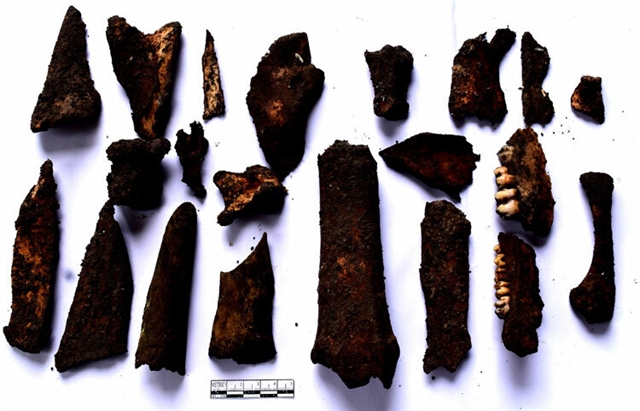Several different artifacts, which may belong to the 10,000-8,000 BC era, have been unearthed on karst mountains in Ba Be District in the northern Vietnamese province of Bac Kan.
Archaeologists from the Vietnam Archaeology Institute and Bac Kan Museum have discovered 73 stone and bone objects indicating traces of early people during an excavation from June 11 to 16 on a five-square-meter area near the entrance of Puong Cave inside the Ba Be National Park.
Of the artifacts unearthed, 71 are objects made from small stones taken from the beds of streams and rivers, the Vietnam News Agency reported on Tuesday, citing Hoang Van Hanh, deputy head of the Bac Kan Provincial Museum.
These objects, some believed to be short axes and oval tools, share relative significance with tools from the Hoabinhian, a prehistoric civilization that existed about 12,000-14,000 years before now in Vietnam and other Asian countries including Malaysia, Indonesia, Thailand, Laos, Myanmar, China and Nepal, Hanh added.
In the meantime, the bone objects, including bones of pigs, monkeys, hedgehogs and deer, as well as shells of oysters and snails, and some nuts, are believed to be the remnants of food left by early people.
Archaeologists also found a rectangular stone with three round holes, placed four centimeters apart from one another, an artifact often discovered at excavation sites of Hoabinhian and its variation, the Bacsonian culture. The function of this stone tool remains unknown to archaeologists.
Some other remnants belonging to the Mac and Later Le dynasties (1527-1789), including more than 100 ceramic pieces, were also found at the excavation site in Bac Kan, according to the Vietnam News Agency.
The excavation proved that Puong Cave was inhabited by ancient Vietnamese people for a long time.
Prof. Trinh Nang Chung, head of the excavation team, said that more research will be conducted at the Puong Cave in the next few months.
Like us on Facebook or follow us on Twitter to get the latest news about Vietnam!


















































